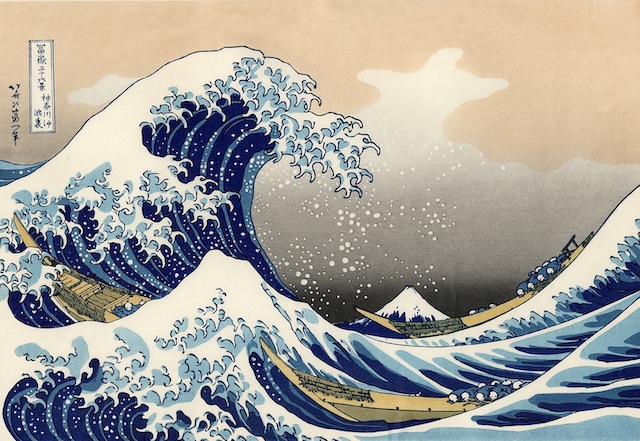The Japanese people have regarded the majestic Mt Fuji as an important cultural and inspirational symbol for centuries. Since the Edo period, Fuji worship and climbing to the summit has become a common practice.
The mythology holds that because of her numerous great eruptions over the centuries, the Japanese, in order to appease the anger of the mount, built the Asama Shrine at the summit (Asama Taisya), with the main god named Asama no Oogami (which is the Mt Fuji herself), and regard Mt Fuji as the Goshintai.
For the past ten years I have been fascinated with the image and wonder of Mt. Fuji. This year I was determined to experience Mt. Fuji by making the climb and witness the rising sun from her summit. Fortunately, Keiko and our good friend Kase agreed to accompany me on this quest.
The Start ––
Keiko, Kase and I began our Mt Fuji adventure at 10:30 PM on Saturday, August 4 selecting to use the Fujinomiyaguchi Tozandou track. Our start point was Station 5 (a gokome or gome) located at an altitude of 2400 meters; the summit Station 10 is at 3777 meters (12,391 feet).
The Fujinomi track, one of three routes, is a popular but an extremely difficult route. It is all volcanic lava rock and magna (from ashes to small, crushed pieces to mostly large, jagged rocks of various sizes and shapes) with the trail roughly bounded by a guide rope.
The distance from Station 5 to the summit transverses five kilometers (3.1 miles) with an altitude change of 1377 meters (4518 feet). The average incline from Station 5 to 7 was about 55-60%; from Station 8 to 9, 70%; and from 9 to the summit 80%.
The ascent (and decent) required constant focus and attention to secure your footing on the proper approach and the use of gloved hands, a sturdy mountain pole and the guide rope, where possible, to safely complete the climb. The uphill track shares the same route with the downhill track makes the situation even worse.
Our plan was to climb through the night, reaching station 9 or the summit for the sunrise.
At the start, there was a full moon with a partially cloudy sky. The temperature was about 26C (80F) with a high level of humidity. It is important to note the temperature element. It can be exceptionally cold on Mt Fuji in the summer!
As a general rule, the temperature falls 0.6℃ for every 100 meter above sea level. Mt Fuji is at 3776 meters above sea level, so the temperature of the summit can be about 20℃ lower than sea level. Since the weather was not so great, we were told to expect the temperature on the summit to be around 10℃ (50F). And the temperature at night can be below 5℃ even if it is in the middle of summer!
Armed with this knowledge, we were dressed and fully prepared for facing the track and elements ….. or so I thought!.
Station 5 to Station 7 ––
Whatever I expected it to be like quickly changed as we began to make our way up the mountain. Climbing with the path lit only by our headlights, the darkness, wind and fog, varying temperatures and most critically, the changing altitude on the extremely complex terrain made for slow and difficult progress. As the “senior” member of our expedition team I certainly caused a far slower rate of ascent. Frankly, I needed to overcome considerable physical discomfort, fear and a lack of confidence in my ability to take on the challenge. Having completed four marathons, I could not believe how difficult it was to make forward and upward progress!
When finally passed through the cloud level to be greeted by a full moon and a clear starry sky, we arrived at “old” Station 7 (having passed through “new” Station 7) I was exhausted. The period of rest was a welcome change of pace. A change of clothing was in order as we began to experience far cooler temperatures.
It was then that I notice that my left climbing boot was losing its sole. Little did I realize what this foretold.
….. To Be Continued …..







